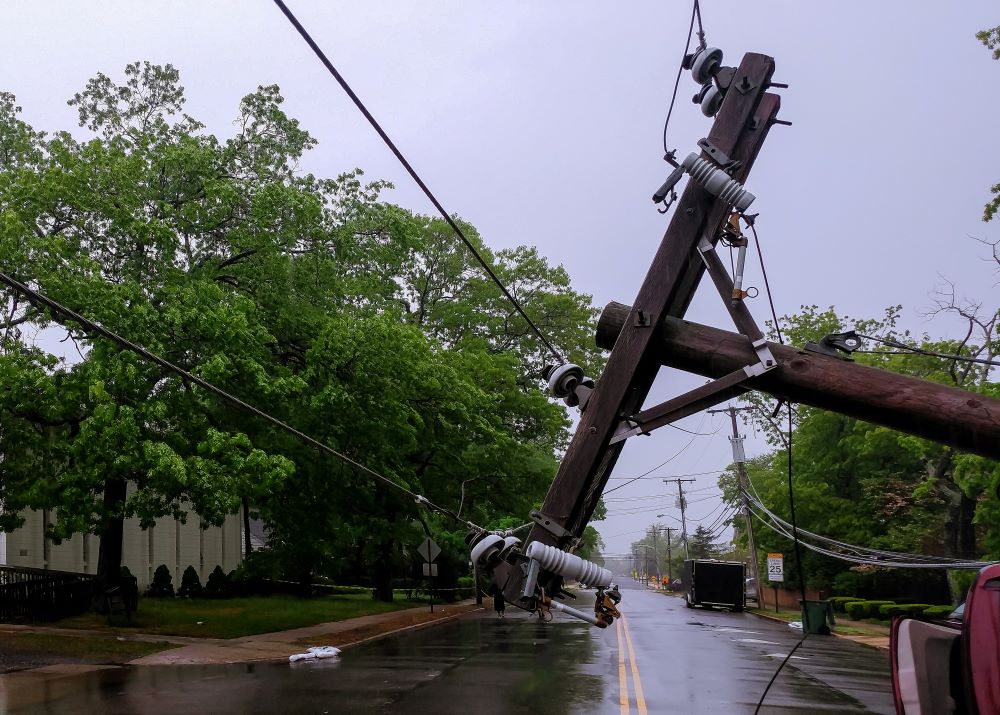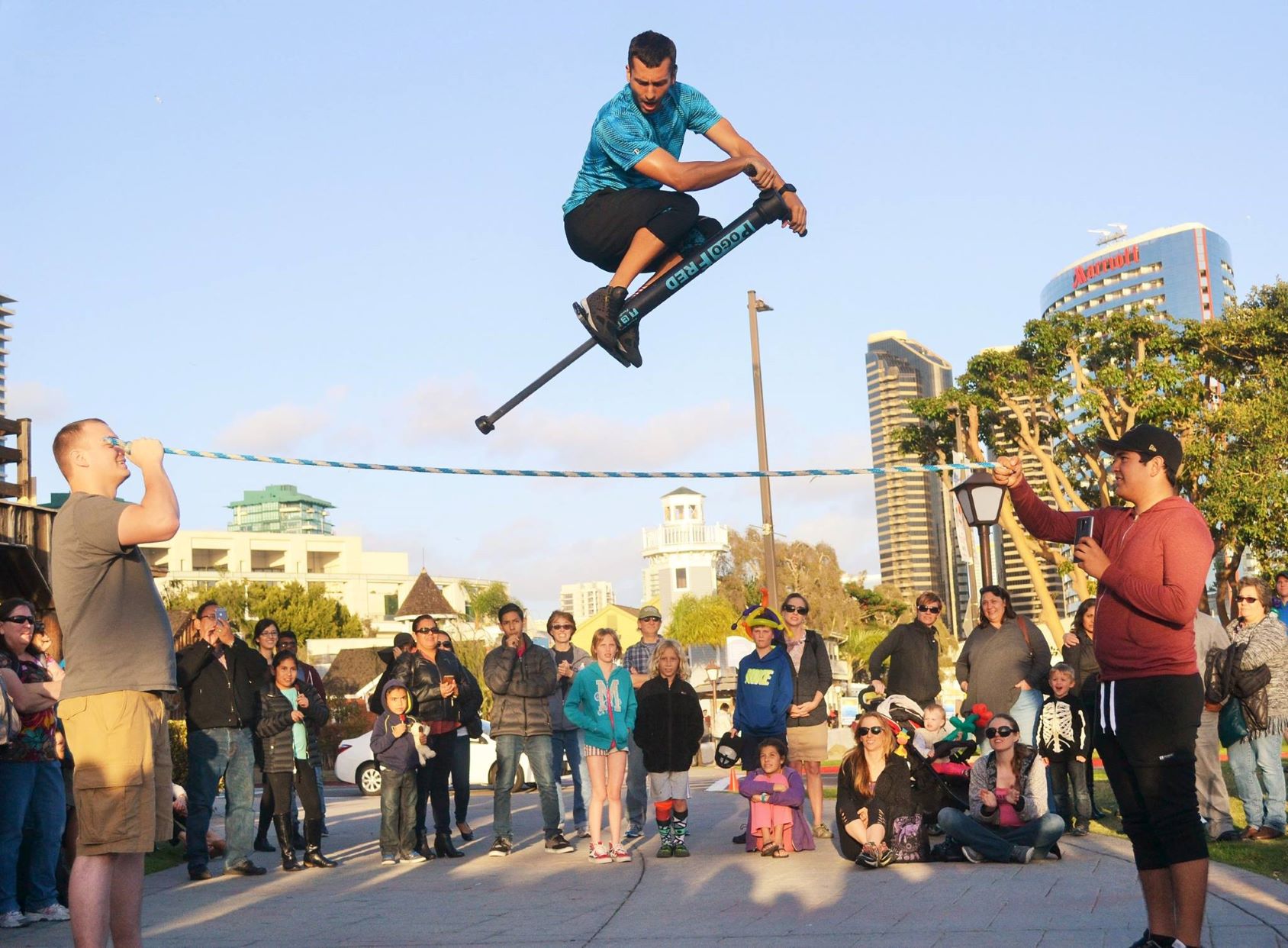
As we gear up to sponsor Pogo Fred at the Lawrence, Kansas, Buskerfest, we started wondering about the history of street performance which is referred to as busking. Here’s what we found:
What is Busking?
If you’ve ever been to Times Square in New York or walked along the Strip in Las Vegas, you’ve no doubt encountered a variety of street performers. You may have stopped to watch or listen and even dropped a buck or two into an open guitar case.
You may have even wondered why and how street performers do what they do. Are they people without homes trying to earn a buck or two to buy food? Are they students sharpening their performance skills? Or do they really make enough money performing on the streets to make a living?
You might be surprised to learn that street performing, or busking, has a long history that dates back to the medieval period. Many in the busking community make a career out of performing in the streets.
Learn more about the Lawrence Busker Festival
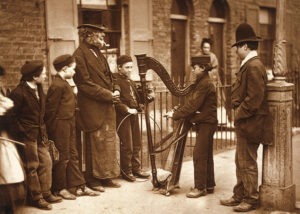
Busking origins
Nearly every known civilization has a history that includes street performance of some kind, making it difficult to pinpoint when busking started. However, according to the book The Buskers: A History of Street Entertainment, the earliest record of street performers shows up in ancient Rome where buskers performed at agricultural festivals.
Busking as we know it today has its roots in Europe where roving performers would travel from town to town to provide entertainment. Towns even had special places for the performers to camp and perform called pitches, often a flat, clear patch of land. Some of these pitches are still in use in Europe today for busking festivals.
 Busking in the United States
Busking in the United States
Busking came to the United States early in our history. In fact, Benjamin Franklin recounts doing a street performance of a poem as a young boy.
Other early records of busking in the colonies include this account from the Virginia Gazette in April 1738:
Williamsburg, April 21
There lately arrived here, a Man and his Wife, and with them two Children, who perform the Agility of Body, by various Sorts of Postures, Tumbling, and Sword Dancing, to greater Perfection than has been known in these Parts for many Years, if ever.
Traveling circus performers may also have been some of the first street performers in the colonies.
Sample some unique festivals around the nation
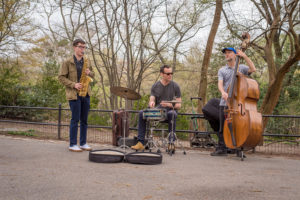
Busking in New York
The most famous American city for buskers is New York. With the influx of immigrants in the late nineteenth century, busking became a way for many people to earn enough money to eat in their new city. According to the blog “General Admission: New York City”:
“The amount of street performers grew immensely; in 1923 the NYC license department reported eight hundred organ grinders and other musicians.”
Busking mostly died out in the city during the 1930s when the mayor of New York made it illegal. But buskers took to the streets again in the late 1950s until another crackdown by local government.
In 1961, folk musicians protesting the denial of a permit to perform in Washington Square Park led to the Beatnik Riot, a confrontation between the police and the musicians who had gathered to play music.
Busking as protest
Street performance then became a tool to question authority in the United States during the Vietnam War, with protest groups performing “guerrilla theater” in the streets to make known their views on the war.
The concept of guerrilla theater originated with the San Francisco Mime Troupe who created performances in support of “revolutionary sociopolitical change.” The performances were often shocking, containing nudity and profanity to draw attention to the message.
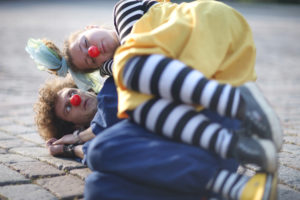
Busking today
Since the 1970s, busking has become more regulated in large cities with many cities requiring buskers to be licensed and to sign up for time slots. However, busking is also outlawed in certain places and cities.
Despite these limitations, busking continues to be the chosen profession for many performers. And it can be lucrative.
“They all own homes,” says Richard Renner, founder of Buskerfest in Lawrence, Kansas. “One guy I know who’s been a busker for 20 years owns two homes in Boston.”
Busking festivals like Buskerfest offer an opportunity for buskers to perform in a place where they know there will be a crowd. Street performer festivals like this are still popular in Europe and in some places in the U.S.
And one could argue that shows like “America’s Got Talent” have their roots in the kinds of acts most often found on the streets, proving that despite society’s trend toward virtual entertainment, street performances won’t be going away any time soon.
